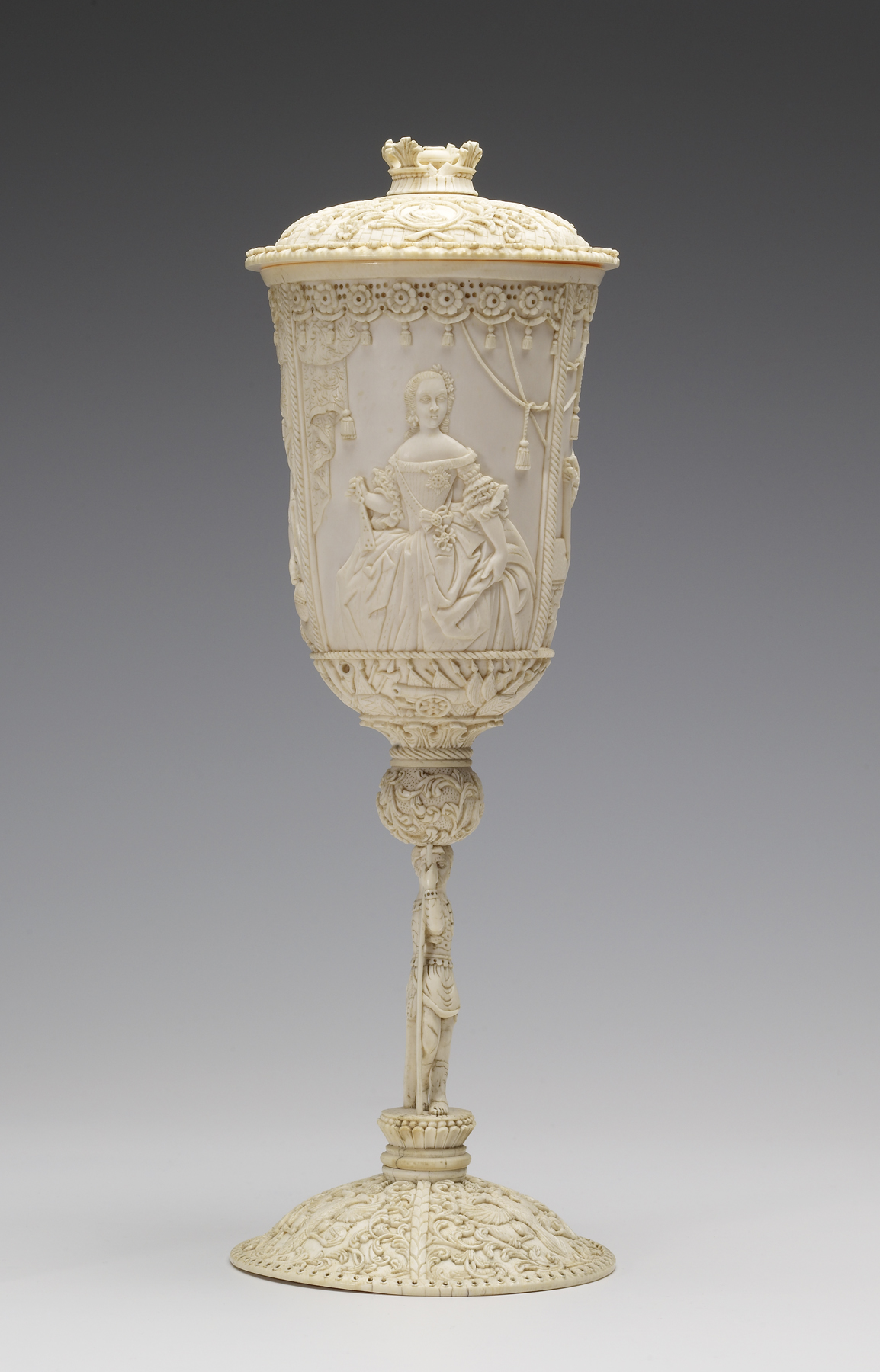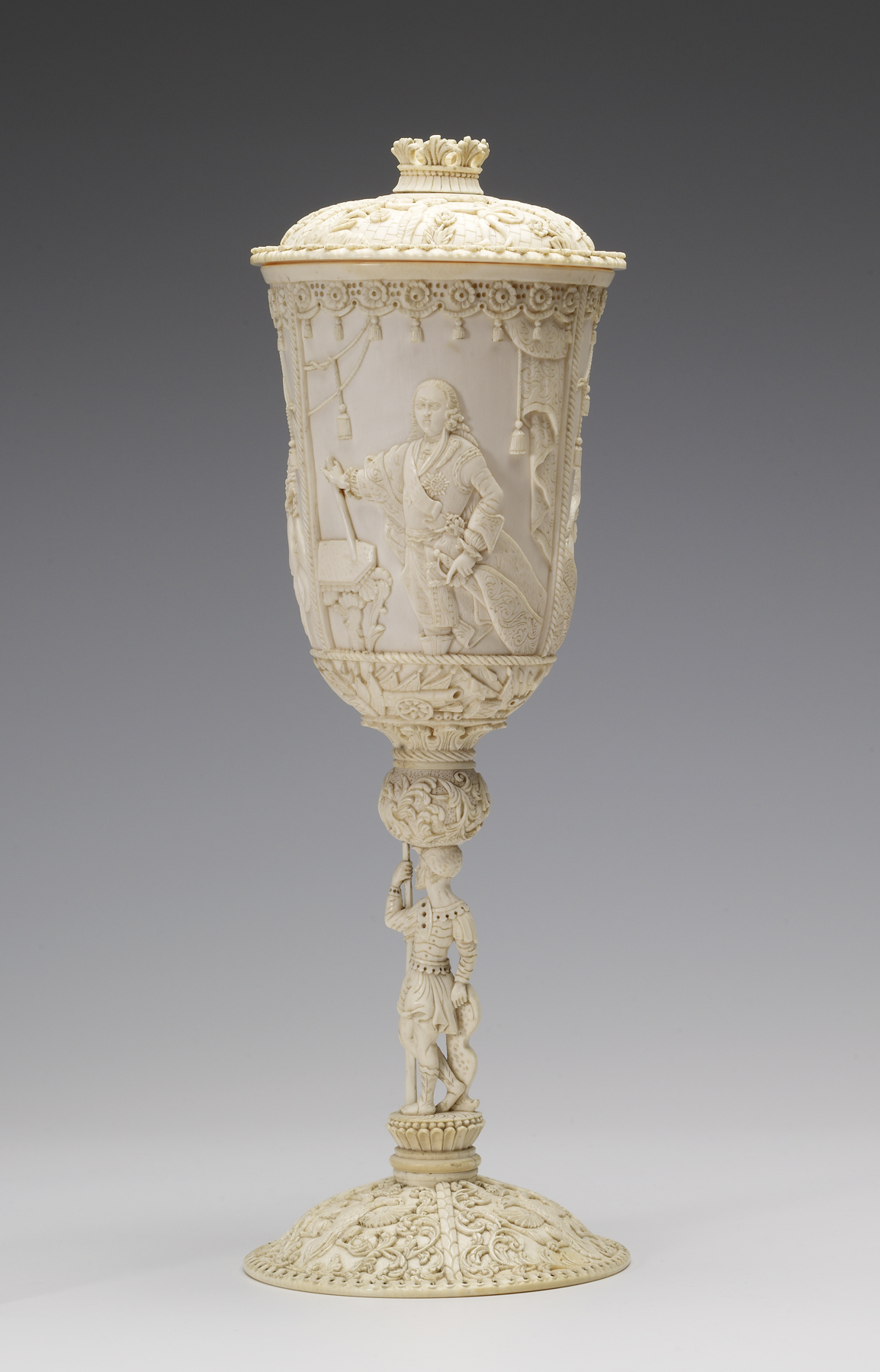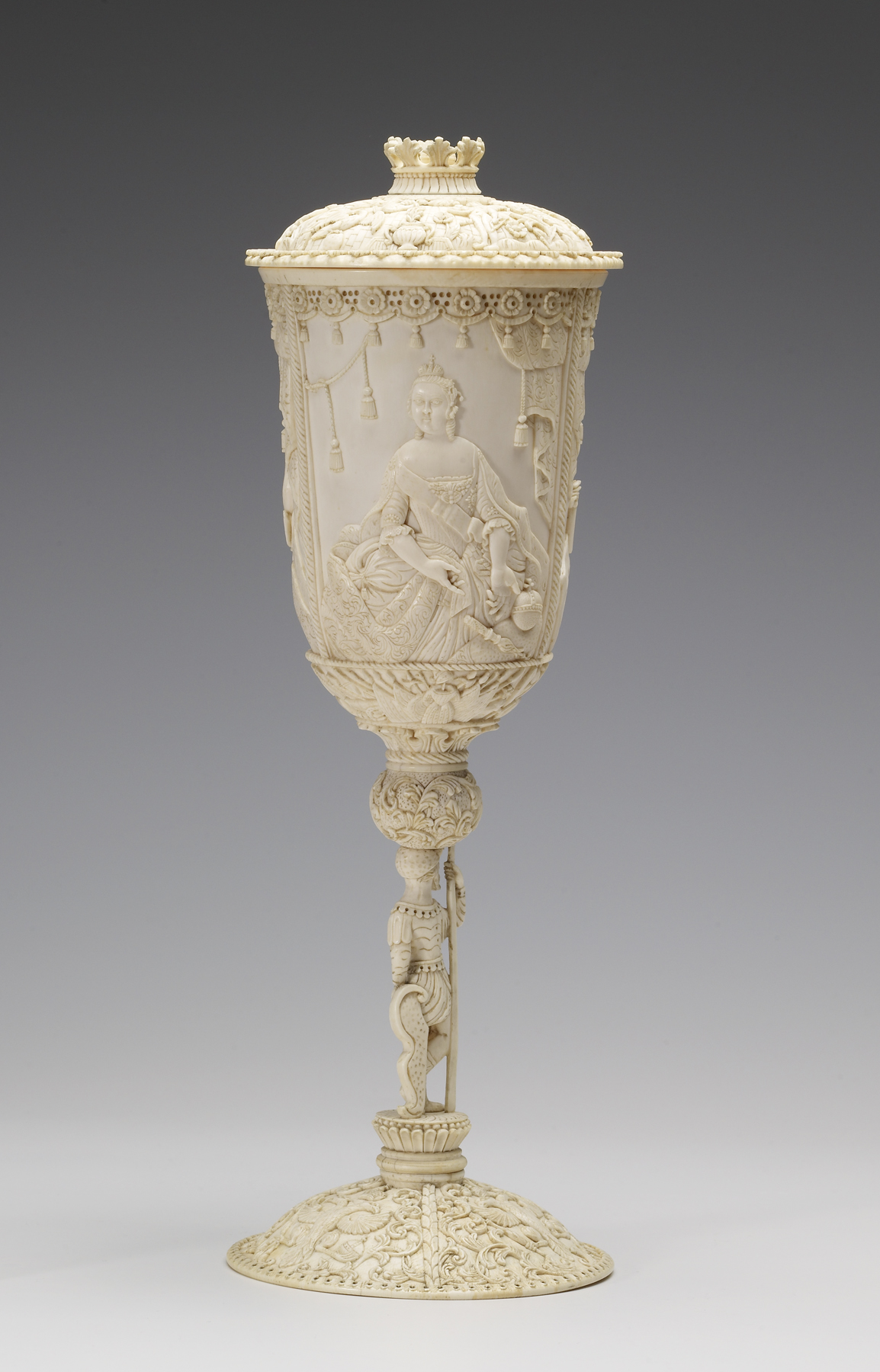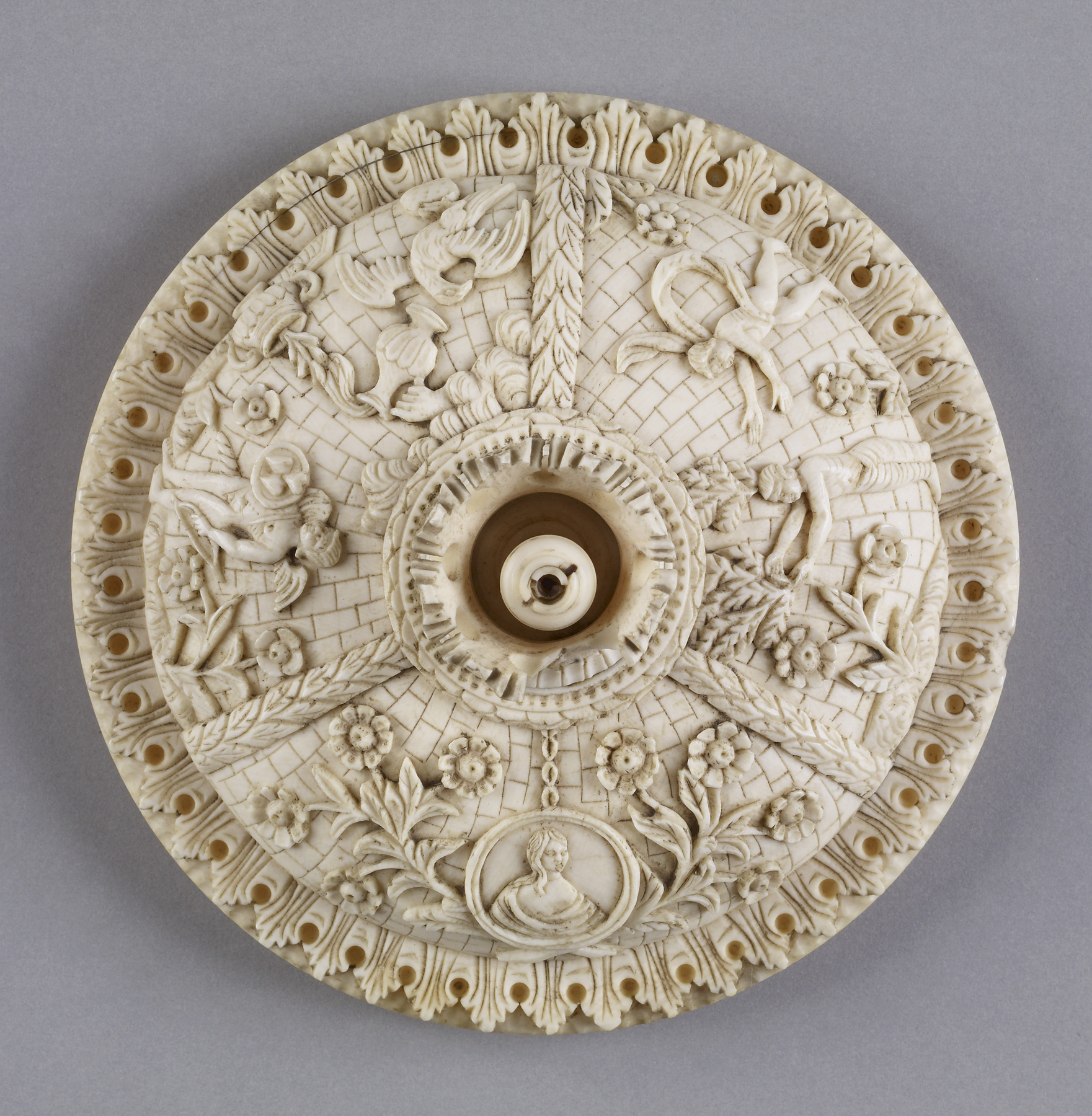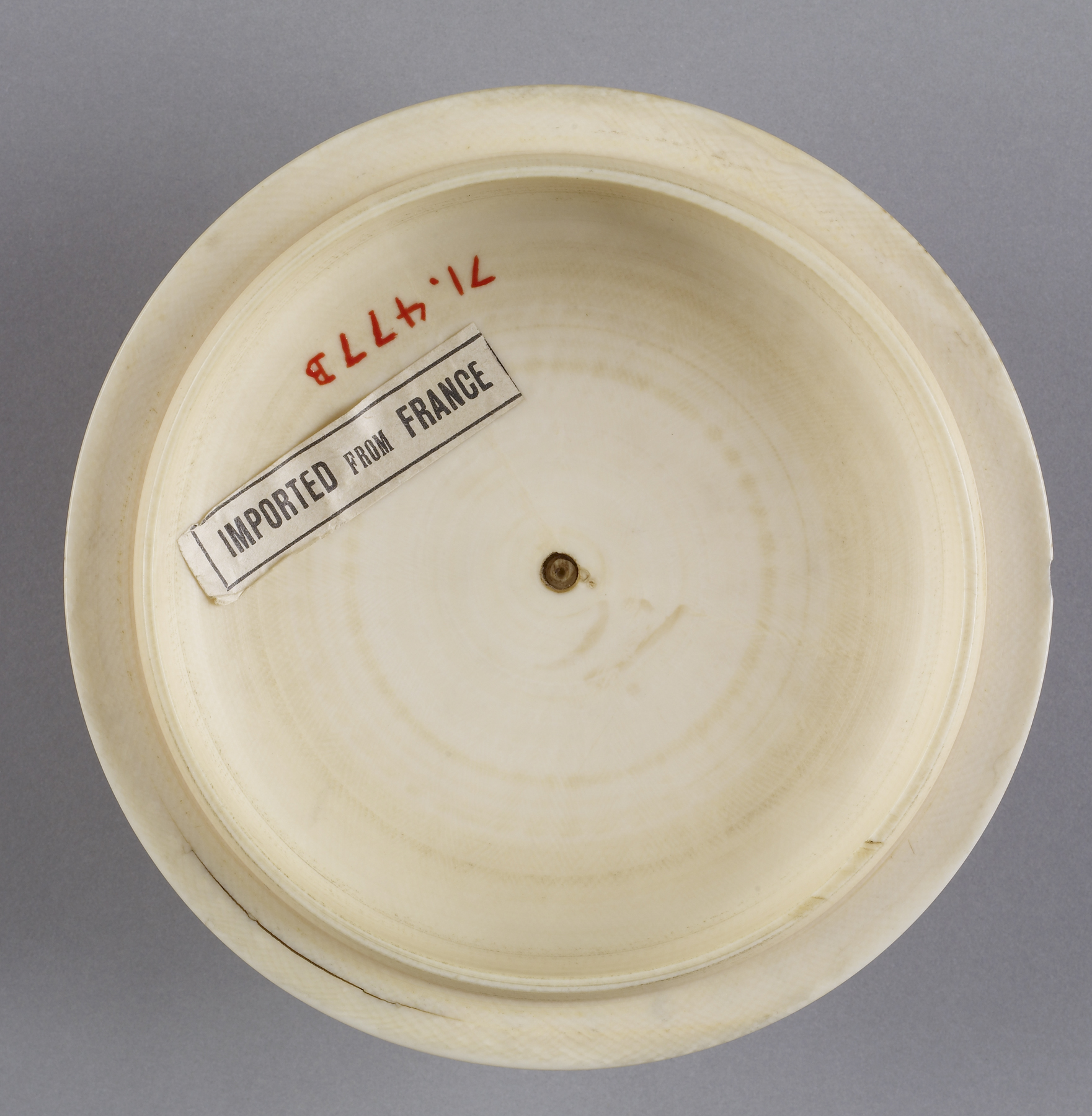"Pokal" with Royal Portraits
(18th and 19th Centuries )
The slightly tapered cup is supported on a foliate-covered knob which rests on the head and spear of a soldier in fanciful armor who also holds a shield. Serving as the cup's stem, the soldier stands on a grooved and carved cylindrical socle, which rises from the center of the base. The base is surrounded by a decorated border and divided into three equal segments by ribs. Each segment features a double-headed imperial eagle surrounded by rococo floral ornamentation carved in bas-relief. Narrow carved ribs divide the surface of the cup into three vertical panels, each containing a three-quarter length portrait beneath a tasseled drapery. On a closely related cup bearing the monogram of the master AD, the portraits are identified as Catherine the Great, the Empress Elizabeth and Peter III.
In the Walters' "pokal" Catherine is seated in three-quarter view, with her head turned to her right. She wears a crown, an elaborate gown, a sash, and a medallion, perhaps the star of the Order of Saint Catherine the Great Martyr. She gestures with both hands toward a scepter and orb resting on the edge of a table in the lower-right foreground. In the panel to her right, Peter III stands in three-quarter view with his right arm extended to grasp a baton. He holds a sword in his left hand. He is decorated with the Order of Saint Andrew and a sash with the badge of that order. The third panel depicts Elizabeth wearing a dress with a very full skirt and a tight bodice that reveals her shoulders. She wears the Order of Saint Catherine the Great Martyr over her heart and a sash tied in a bow at her left, from which the badge of that order is suspended. The curving border of the cup beneath the portrait panels is ornamented with military trophies, including cannons, flags, pikes and swords.
The fitted cover of the vessel forms a shallow dome which is surmounted by a crown encircling a central finial. The sloping surface of the cover is divided by floriated ribs into three panels in which the ornamentation is carved over a background surface, imitating ashlar masonry. In one panel, flowering branches surround a medallion with a half-length female portrait carved to imitate a miniature suspended from a chain. In the panel to the right, Apollo is depicted in pursuit of Daphne. The specific meaning of the third panel, which combines images from emblem books, remains obscure, although the juxtaposition of the devices suggests an amatory significance: on the right, Cupid is standing in a garden holding his bow and a shield emblazoned with three hearts; from clouds in the upper left, a hand of God extends, pouring water from a pitcher to irrigate a plant growing from a two-handled pot; on the right, an eagle is balanced on a globe.
There is a crack through the rim of the cover, and the top of the finial and one fleuron from the cover are missing.
Inside the cover is a paper tag, printed: IMPORTED FROM FRANCE. Beneath the base, there is another tag printed with the same words and two old tags: one, with a red border, is marked "M 149" in pencil and the other, with a gold border, is marked "19" in red ink.
Inscription
Provenance
Provenance (from the French provenir, 'to come from/forth') is the chronology of the ownership, custody, or location of a historical object. Learn more about provenance at the Walters.
Mouravier-Apostol Collection [date and mode of acquisition unknown] (?); Alexandre Polovtsoff (Aleksandr Aleksandrovich Polovtsov), Paris [date and mode of acquisition unknown]; Henry Walters, Baltimore, 1930, by purchase; Walters Art Museum, 1931, by bequest.
Exhibitions
| 2017-2018 | Fabergé and the Russian Crafts Tradition: An Empire's Legacy . The Walters Art Museum, Baltimore. |
| 1988-1989 | A Millennium of Christianity: Russian Art from The Walters Art Gallery. The Walters Art Gallery, Baltimore. |
| 1983-1984 | Ivory: The Sumptuous Art. The Walters Art Gallery, Baltimore. |
| 1959-1960 | Russian Art: Icons and Decorative Arts from the Origin to the Twentieth Century. The Walters Art Gallery, Baltimore. |
Conservation
| Date | Description | Narrative |
|---|---|---|
| 1/11/1962 | Treatment | cleaned |
| 8/19/1982 | Treatment | cleaned; examined for condition |
Geographies
Russia (Place of Origin)
Measurements
Cup with lid H: 12 1/8 × Diam at base: 4 1/8 in. (30.8 × 10.5 cm); Cup H: 10 11/16 × Diam at base: 4 1/8 in. (27.2 × 10.5 cm); Lid H: 1 5/8 × Diam: 4 in. (4.1 × 10.1 cm)
Credit Line
Acquired by Henry Walters, 1930
Location in Museum
Not on view
Accession Number
In libraries, galleries, museums, and archives, an accession number is a unique identifier assigned to each object in the collection.
In libraries, galleries, museums, and archives, an accession number is a unique identifier assigned to each object in the collection.
71.477

